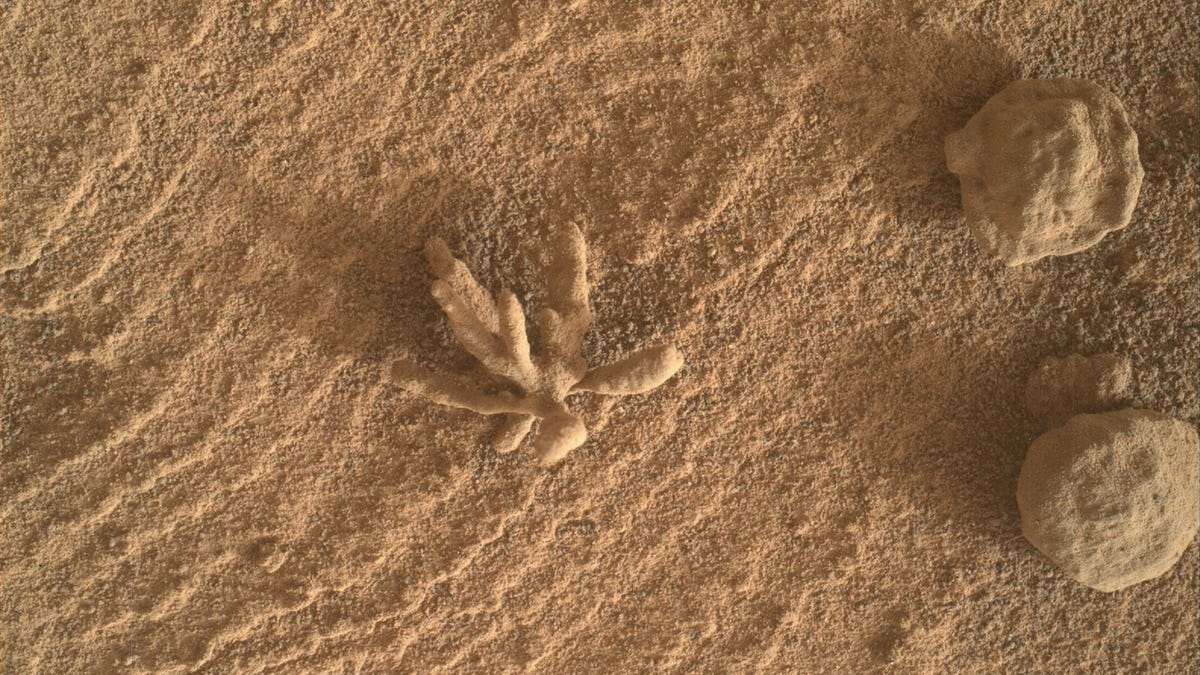NASA Rover Spots Unreal Mars 'Flower' Formation
There are no coral reefs or fossilized flowers on Mars, but there's a lookalike.
Hello, beautiful! NASA's Curiosity rover snapped a gorgeous, delicate formation on Mars that looks like it could be a branching piece of ocean coral. It's not coral, but it's worth contemplating how we see familiar Earth objects in random shapes on Mars.
The miniscule Martian sculpture invites poetic comparisons. It resembles a water droplet captured at the moment of explosion against a surface, or the tendrils of an anemone in a tide pool.
Kevin Gill, famous for processing NASA space images, brought my attention to the lovely Curiosity images with a tweet on Friday describing the formation as a "Martian flower."
A Martian Flower 🌻. Imaged by @MarsCuriosity yesterday on Sol 3397 using MAHLI and ChemCam.https://t.co/DIPAVsnUvKhttps://t.co/iPCVDaGK15https://t.co/tCEfaKEvVr pic.twitter.com/6tkRV59Fpl
— Kevin M. Gill (@kevinmgill) February 25, 2022
The image comes from Curiosity's Mars Hand Lens Imager (Mahli) instrument, which NASA describes as "the rover's version of the magnifying hand lens that geologists usually carry with them into the field." So the formation in the image is quite small.
Abigail Fraeman, a deputy project scientist for Curiosity, tweeted a helpful visual guide that compares the object with a US penny to give an approximate sense of the scale.
(1/3) Your Friday moment of zen: A beautiful new microscopic image from @MarsCuriosity shows teeny, tiny delicate structures that formed by mineral precipitating from water.
— Abigail Fraeman (@abbyfrae) February 26, 2022
(Penny approximately for scale added me)https://t.co/cs7t11BWAj pic.twitter.com/AU20LjY5pQ
Fraeman writes that the image "shows teeny, tiny delicate structures that formed by mineral precipitating from water."
Curiosity has been in residence in the Gale Crater on Mars since 2012. It's working its way up the crater's central mountain Mount Sharp, delivering selfies and insights into the red planet's geology, history and atmosphere as it goes.
The tiny mineral formation is a reminder of Mars' once-watery past, a key area of study that could help scientists figure out if the now inhospitable planet was once capable of hosting microbial life. It was nice of Curiosity to stop and smell the "flower" for us.


